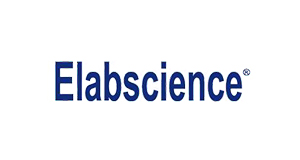Recombinant E.coli Glycerol kinase Protein (His Tag)
Recombinant E.coli Glycerol kinase Protein (His Tag)
Artikelnummer
ELSPDEO100001-20
Verpackungseinheit
20 µg
Hersteller
Elabscience Biotechnology
Verfügbarkeit:
wird geladen...
Preis wird geladen...
Abbreviation: Glycerol kinase
Target Synonym: GK;glpK
Target Species: E.coli
Expression Host: E.coli
Fusion Tag: N-His & C-His
UNIProt ID: P0A6F3
Background: Glycerol kinase from?E. coli?(glpK) catalyzes the ATP-dependent phosphorylation of glycerol to produce?sn-glycerol-3-phosphate (G3P), the first and rate-limiting step in the utilization of glycerol. In the presence of glycerol, glpK is stimulated by interaction with the membrane-bound glycerol facilitator. In the presence of glucose, glpK activity is allosterically inhibited by fructose-1,6-bisphosphate (FBP) of the glycolytic pathway. Under physiological conditions, the enzyme is in an equilibrium between the active dimer and the inactive tetramer. FBP binds to and stabilizes the inactive form, therefore shifting the usage of glycerol metabolic pathway to glycolytic pathway. GlpK is a member of a superfamily of ATPases that includes actin, hexokinase and the heat shock protein hsc70. Although these proteins are dissimilar in amino acid sequence and function, they share similar tertiary folds and likely the same catalytic mechanism. The enzyme activity was measured using a phosphatase-coupled kinase assay.
Activity: Measured by its ability to transfer phosphate from ATP to glycerol. The specific activity is ≥ 200U/mg protein, as measured under the described conditions.
Sequence: Thr2-Glu502
Purity: > 90 % as determined by reducing SDS-PAGE.
Formulation: Lyophilized from sterile PBS, pH 7.4.
Normally 5 % - 8 % trehalose, mannitol and 0.01% Tween80 are added as protectants before lyophilization.
Please refer to the specific buffer information in the printed manual.
Endotoxin: Please contact us for more information.
Target Synonym: GK;glpK
Target Species: E.coli
Expression Host: E.coli
Fusion Tag: N-His & C-His
UNIProt ID: P0A6F3
Background: Glycerol kinase from?E. coli?(glpK) catalyzes the ATP-dependent phosphorylation of glycerol to produce?sn-glycerol-3-phosphate (G3P), the first and rate-limiting step in the utilization of glycerol. In the presence of glycerol, glpK is stimulated by interaction with the membrane-bound glycerol facilitator. In the presence of glucose, glpK activity is allosterically inhibited by fructose-1,6-bisphosphate (FBP) of the glycolytic pathway. Under physiological conditions, the enzyme is in an equilibrium between the active dimer and the inactive tetramer. FBP binds to and stabilizes the inactive form, therefore shifting the usage of glycerol metabolic pathway to glycolytic pathway. GlpK is a member of a superfamily of ATPases that includes actin, hexokinase and the heat shock protein hsc70. Although these proteins are dissimilar in amino acid sequence and function, they share similar tertiary folds and likely the same catalytic mechanism. The enzyme activity was measured using a phosphatase-coupled kinase assay.
Activity: Measured by its ability to transfer phosphate from ATP to glycerol. The specific activity is ≥ 200U/mg protein, as measured under the described conditions.
Sequence: Thr2-Glu502
Purity: > 90 % as determined by reducing SDS-PAGE.
Formulation: Lyophilized from sterile PBS, pH 7.4.
Normally 5 % - 8 % trehalose, mannitol and 0.01% Tween80 are added as protectants before lyophilization.
Please refer to the specific buffer information in the printed manual.
Endotoxin: Please contact us for more information.

 English
English










